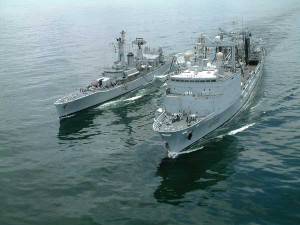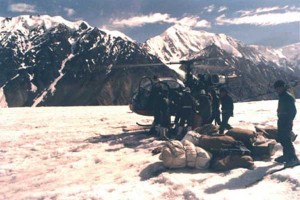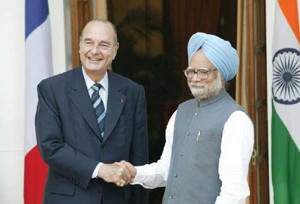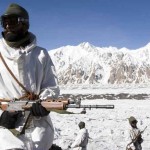Phase 1991-2007: India becomes a power to reckon
It is obviously arbitrary to divide the bilateral rapport in phases which may correspond to important stages in one of the country’s history, but not automatically the other.
 Year 1991 witnessed a new birth for India. After more than 40 years of planned economy patterned on the Soviet model, Narasimha Rao, the Prime Minister had the courage to open up the economy with the results witnessed by everyone today. It was as if the genius of the Indian race, bottled up for all those decades, had suddenly sprung again forth. On the international stage, this period corresponded to the collapse of the Soviet Union and the chaos in Afghanistan, which eventually led to the advent of the Taliban regime.
Year 1991 witnessed a new birth for India. After more than 40 years of planned economy patterned on the Soviet model, Narasimha Rao, the Prime Minister had the courage to open up the economy with the results witnessed by everyone today. It was as if the genius of the Indian race, bottled up for all those decades, had suddenly sprung again forth. On the international stage, this period corresponded to the collapse of the Soviet Union and the chaos in Afghanistan, which eventually led to the advent of the Taliban regime.
Despite the disappearance of the Soviet Union and the world turning unipolar, the Russian Republic remained India’s main armament supplier during the period 1992-2006 with $ 13,751 dollars. France was fifth ($ 797 million) after the Netherlands ($ 1,004 million), UK ($ 801 million) and Germany ($ 898 million). With the economic liberalization in India, all efforts were focused to make the local economy vibrant; the percentage of defence expenditure came down from a maximum of 4% in the 1980’s to less than 3% in the nineties (2.6% in 1996 and 2004).
The most interesting aspect of the 90’s was the tremendous boost in bilateral relations given by the visits of President Chirac in January 1998 and Prime Minister Vajpayee’s trip to Paris later in the year.
Year 1991 witnessed a new birth for India. After more than 40 years of planned economy patterned on the Soviet model, Narasimha Rao, the Prime Minister had the courage to open up the economy with the results witnessed by everyone today. It was as if the genius of the Indian race, bottled up for all those decades, had suddenly sprung again forth.
The most striking feature was the setting up of a framework for a strategic partnership. Before reaching Delhi, the French President had declared that he was keen on an “ambitious partnership”. Using a de Gaulle-like language, Jacques Chirac saluted India, “a nation which has affirmed its personality on the world stage”. He said that he had come to show that “France wanted to accompany India in its potent march [towards the future].”
Inaugurating a seminar in Vigyan Bhavan, the French President elaborated on the nuclear deal. Reminding that “certain conditions are to be met”,22 he however suggested to: “reflect, together with those of our partners involved, on the ways to reconcile our common will to co-operate and the necessary respect for the rules the international community has set itself”. Nine years later, a similar language could be used by President Sarkozy when he visits Delhi in January 2008.
Chirac’s words were not mere political niceties. When India conducted its nuclear tests in Pokhran in May, France was one of the few countries which did not condemned Delhi (or impose sanction). This was greatly appreciated in Delhi and when Prime Minister Vajpayee returned Chirac’s visit in October, the new strategic dialogue could take its first concrete steps.23
These events set in motion a closer collaboration. From the friendship mentioned by de Gaulle, the relation had become a partnership. By putting proper structures in place, the dialogue was institutionalized:
- A Strategic Dialogue at the level of National Security Advisors provides both sides an opportunity to review the evolution of the overall global security situation and emerging challenges in various parts of the world (17 rounds have been held so far).
- A High Level Committee for Defence at the level of Defence Secretaries, works through its three specialized sub-committees, dealing with issues related to defence co-operation.
- A Joint Working Group on Terrorism has been established to co-operate in the fight against terrorism.
- Annual consultations between the two foreign ministries are held at the level of Foreign Secretaries.
- A Joint Committee for Economic and Technical Cooperation at the level of Ministers of Commerce
 The bilateral relations have benefited in several ways:
The bilateral relations have benefited in several ways:
- Increase in the number of high-level civilian and defence personnel visits. Just a glimpse at the website of the French Embassy in India24will show the drastic improvement in this field. Mr. Bernard Kouchner, the French Foreign Minister visited Delhi on December 20 and 21. The regular reciprocal visits of a large number of senior serving defence officers have enabled a deeper sharing of views and experience.25
- Defence Personnel Exchanges. Exchanges have not been too successful so far. According to General Alain Lamballe (Retd), a former military attaché and expert in the Indo-French relations: “Both nations have not sufficiently explored the possibility to send young officers for training. It is the only guarantee to have a good reciprocal knowledge in the long term. India hesitates to put its officers in contact with foreigners, fearing compromises.26″ If trust between the armed forces of the two countries increases, one can hope that there will be an improvement in this field.
- Joint Naval Exercises. In 2006, the Indian Navy called these exercises: “A Significant Indicator”. Explaining the background of the successful Varuna joint naval exercises, the Indian Ministry of Defence said: “In recent times the Indian Navy laid great emphasis on enhancing bilateral ties and interoperability with navies of developed countries through professional and operational interactions.” Varuna 07, a sea and air military exercise was held from the September 11 to 19, 2007, off the Somali coasts and in the Gulf of Aden in continuation of the exercises organized in March and April 2006 off the coast of Goa. The French contribution was then centered on the aircraft carrier Charles De Gaulle.
- Aerial Exercises: From 12 to 23 February 2007, the French and Indian Air Forces carried out the third edition of the Garuda series of air force exercises. Organised for the second time in India, this year exercise took place at Kalaikunda Air Force Station. The French Air Force participated with one Airborne Warning and Control System (AWACS) aircraft, four Mirage 2000-D Air-to-Ground fighters and four Mirage 2000-5 Air-Defence fighters. It was the first time that a French AWACS Aircraft came to India.
- Joint Research and Development: One of the many examples which could be given is the Defence Research and Development Laboratory (DRDL), a missile research laboratory under the Defence Research Development Organisation (DRDO) and the leading European company, MBDA Missile Systems, planning to jointly develop a new-generation low-level, quick-reaction missile (LLQRM). The $500 million project is aimed at developing the 35-kilometer Maitri quick-reaction missile, a blend of the French Mica and DRDO Trishul. MBDA will develop an active homing head, thrust-vector controls and missiles. DRDL will handle software, command-and-control, and integration.
Though President Chirac’s visit to India in February 2006 was marred by the Clémenceau controversy, it further cemented the close relations between the two nations. On the eve of the visit, France’s ambassador Dominique Girard had summed up the relations: “Our two nations, now more than ever before, have a major responsibility in relation to the rest of the international community and the promotion of peace and development. The strategic partnership that they have forged with one another must be based on sound and co-ordinated defence systems”.





